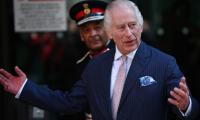Johannesburg: At least 10,000 children in South Africa have dropped out of school since the pandemic started, with students learning half or less than average in 2020 due to coronavirus, the education ministry said Sunday.
Face-to-face lessons have only partially resumed since South Africa’s schools reopened in June last year, after more than two months of home-schooling to limit the spread of Covid-19. Public schools have since been shut again over shorter periods -- including a delayed start to the 2021 academic year -- and most students still only physically attend class on a rotational basis to avoid crowding.
Education Minister Angie Motshekga on Sunday said that as a result, children in 2020 learnt between 50 and 75 percent less than the previous year’s average. Coronavirus interruptions have also affected attendance, with 10,000 fewer children aged between seven and 14 enrolled in school in 2021, according to a preliminary analysis by the Department of Basic Education (DBE).
Enrolment was also 25,000 lower than expected for children aged between four and six, although less concerning for secondary school students. "The unprecedented closures of our schools, and the unplanned disruptions to teaching and learning, have resulted in the reversal of gains made in the last 20 years," Motshekga said at a press briefing.
Most learning losses were observed in poorer rural areas and townships, where internet access is limited. "If children are not in contact with teachers, especially children from disadvantaged communities, learning does not happen as it should," DBE researcher Martin Gustafsson told the briefing.
He added that primary school children were still only in class for an average of three days a week and had already missed half of planned learning this year. South Africa is the continent’s worst virus-hit country, with over 2.7 million confirmed coronavirus cases and more than 81,000 deaths.
The nation is currently battling a persistent third infection wave that experts warn could overlap with a looming fourth.Meanwhile, a lockdown of Australia’s second-biggest city Melbourne will be extended, authorities announced on Sunday as they struggle to quash a stubborn coronavirus Delta variant outbreak.
Almost seven million people in Melbourne and surrounding Victoria state were scheduled to exit a four-week lockdown on Thursday, but state premier Dan Andrews said it would no longer be possible with case numbers rising by 92 overnight.
It is the city’s sixth lockdown of the pandemic, and includes a curfew, the closure of playgrounds and strict limits on exercise. "We still have too many cases in the community for too long for us to be able to open up and give back... those freedoms that we cherish and those freedoms that we desperately want back," Andrews said.
Andrews did not reveal how long stay-at-home orders would remain in place, saying officials would "look at all the different options".
Meantime, neighbouring New South Wales state, which includes Australia’s most populous city of Sydney, posted 1,218 new cases on Sunday -- pushing the country’s overall daily caseload to a fresh all-time high. Almost 19,000 cases have been detected in the state of about eight million people since the Delta variant outbreak began in mid-June.
But with vaccination rates now surging in New South Wales and authorities predicting 70 percent of adults there will be fully vaccinated by October, residents weary of prolonged restrictions have been promised some modest freedoms.
In non-hotspot areas, five fully vaccinated adults will be able to gather outside for up to an hour from mid-September while authorities have also signalled small weddings will soon be allowed.
Australian leaders have agreed on a national roadmap for reopening the country once vaccination targets of 70 and 80 percent are reached in each state and territory. The nation has recorded more than 51,000 cases of Covid-19 and almost 1,000 deaths in a population of 25 million since the start of the pandemic.
In a related development, France will turn off the fire-hose of aid to help businesses through the Covid-19 pandemic, instead directing funds where most needed, the government’s accounts chief said on Sunday.
"It’s the end of whatever it takes", Minister for Public Accounts Olivier Dussopt warned. The government wants to "look at what is really being lost, rather than just what is being said".
He added that not all industries or regions were suffering equally, and that even within some Covid-hit sectors, there were businesses that were thriving. "We are ready to help the sectors that really need it," Dussopt told Radio J ahead of a meeting with leaders from industries still suffering from the pandemic, including tourism, small businesses and culture.
He said that any aid "will be a necessarily transitional, very sector-focused approach". As an example, Dussopt cited the restaurant trade: "In some regions, the number of visitors is the same as before, it is even higher than in July and August 2020, which were months that were not affected."
Companies must also take responsibility for their own operations and for finding solutions to their problems, he said. Instead of simply complaining about the difficulty they face hiring, he said, employers "have an interest in making the careers they offer more attractive" -- by increasing salaries, for example.
The state had made great efforts, he said. Moreover, economic growth is forecast at six percent this year, with the government hoping for four percent in 2022. The minister said the government’s deficit peaked at 9.2 percent in 2020 and would come in "below nine percent" for 2021. That was "despite the cost of the crisis, despite the cost of the recovery plan", he said, adding "we can aim for a target of around five percent" in 2022, depending on actual growth.
Police tasered and arrested a 36-year-old man after the incident near Hainault in east London
The judge also ordered Trump to remove the statements from his Truth Social account and his campaign website
This decision, made in collaboration with the educational regulatory authority of Dubai, the Knowledge and Human...
She said she went into a state of shock when the incident took place
Three of the officers who were killed were part of a U.S. Marshals Task Force
Indian news channels that often take a hard line position against China blasted Musk’s trip







